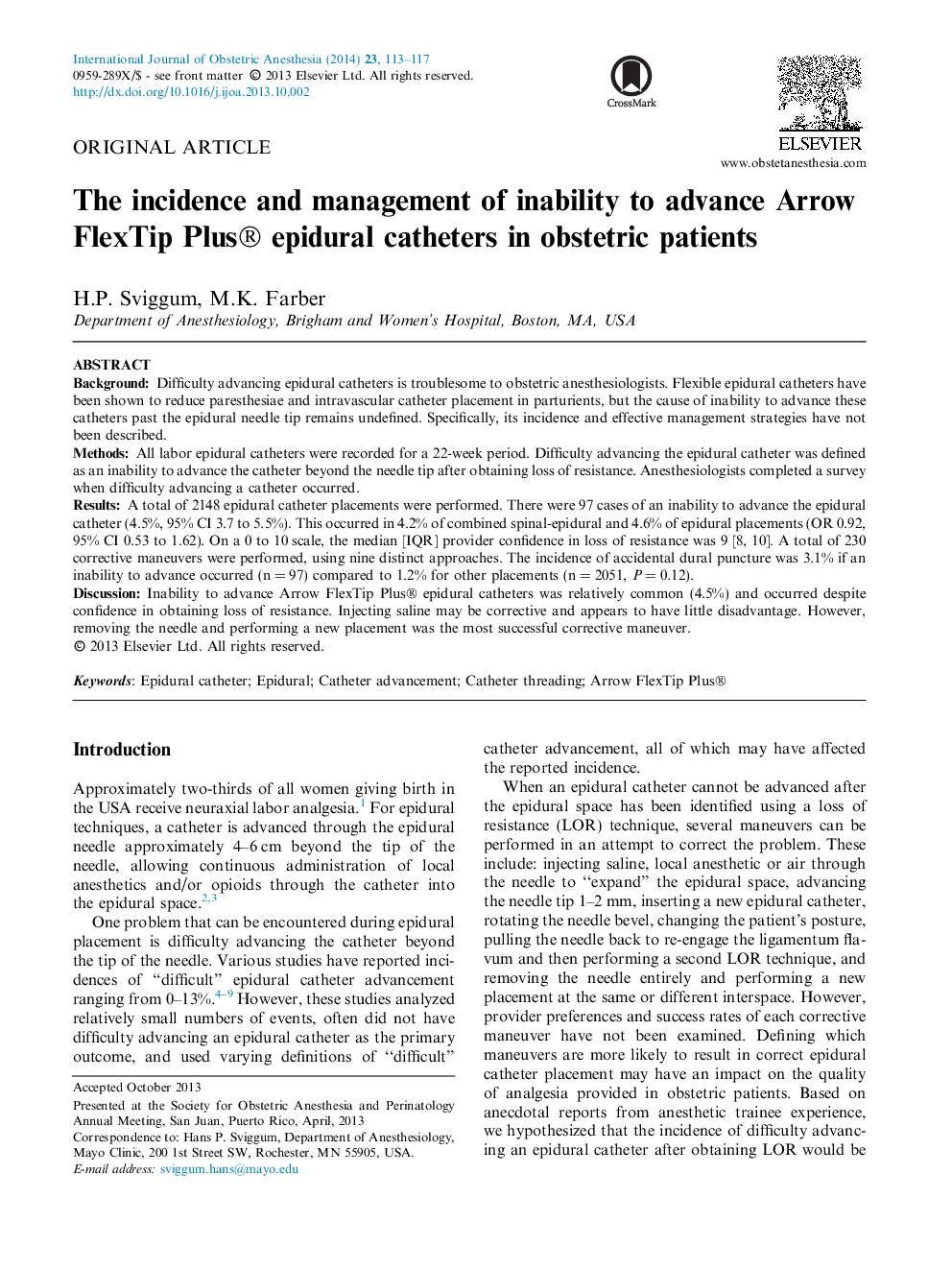| کد مقاله | کد نشریه | سال انتشار | مقاله انگلیسی | نسخه تمام متن |
|---|---|---|---|---|
| 2757494 | 1567519 | 2014 | 5 صفحه PDF | دانلود رایگان |

BackgroundDifficulty advancing epidural catheters is troublesome to obstetric anesthesiologists. Flexible epidural catheters have been shown to reduce paresthesiae and intravascular catheter placement in parturients, but the cause of inability to advance these catheters past the epidural needle tip remains undefined. Specifically, its incidence and effective management strategies have not been described.MethodsAll labor epidural catheters were recorded for a 22-week period. Difficulty advancing the epidural catheter was defined as an inability to advance the catheter beyond the needle tip after obtaining loss of resistance. Anesthesiologists completed a survey when difficulty advancing a catheter occurred.ResultsA total of 2148 epidural catheter placements were performed. There were 97 cases of an inability to advance the epidural catheter (4.5%, 95% CI 3.7 to 5.5%). This occurred in 4.2% of combined spinal-epidural and 4.6% of epidural placements (OR 0.92, 95% CI 0.53 to 1.62). On a 0 to 10 scale, the median [IQR] provider confidence in loss of resistance was 9 [8, 10]. A total of 230 corrective maneuvers were performed, using nine distinct approaches. The incidence of accidental dural puncture was 3.1% if an inability to advance occurred (n = 97) compared to 1.2% for other placements (n = 2051, P = 0.12).DiscussionInability to advance Arrow FlexTip Plus® epidural catheters was relatively common (4.5%) and occurred despite confidence in obtaining loss of resistance. Injecting saline may be corrective and appears to have little disadvantage. However, removing the needle and performing a new placement was the most successful corrective maneuver.
Journal: International Journal of Obstetric Anesthesia - Volume 23, Issue 2, May 2014, Pages 113–117